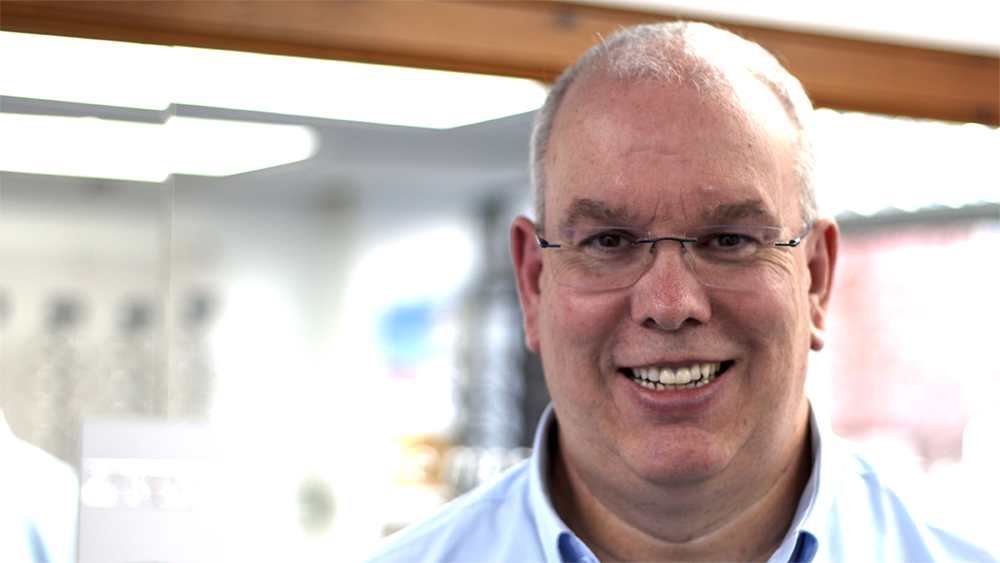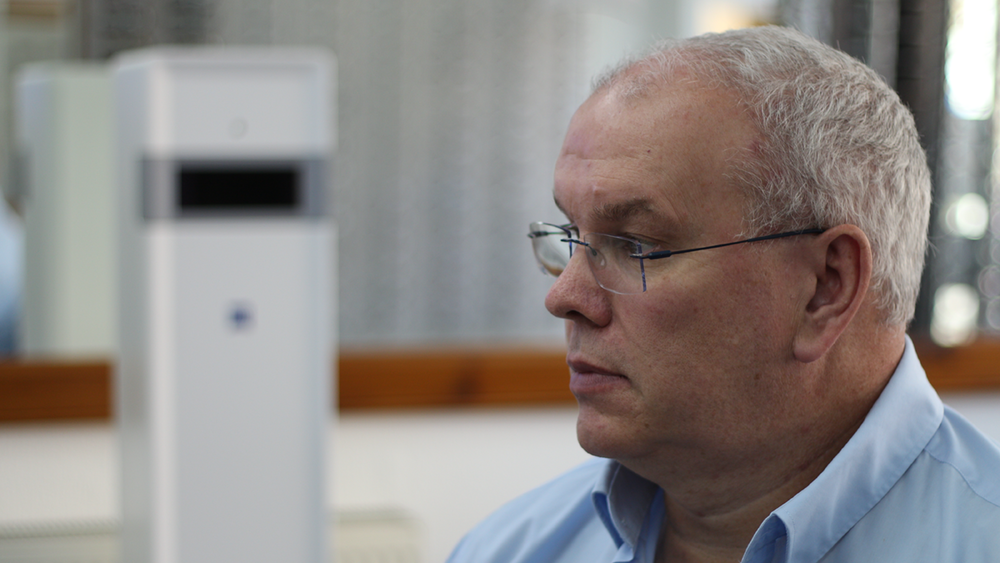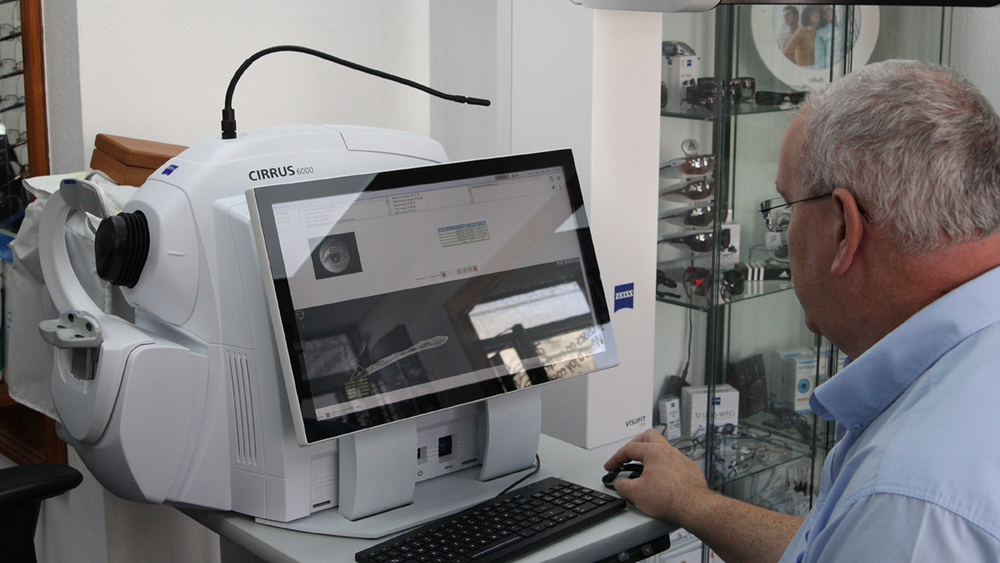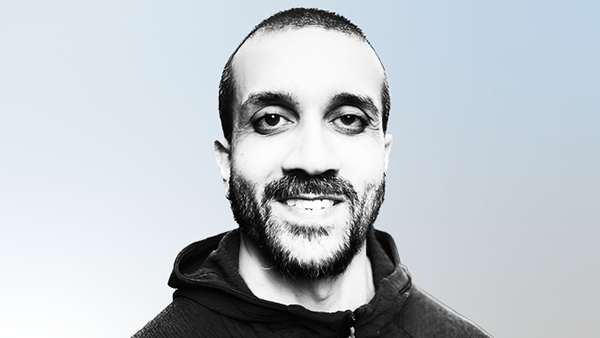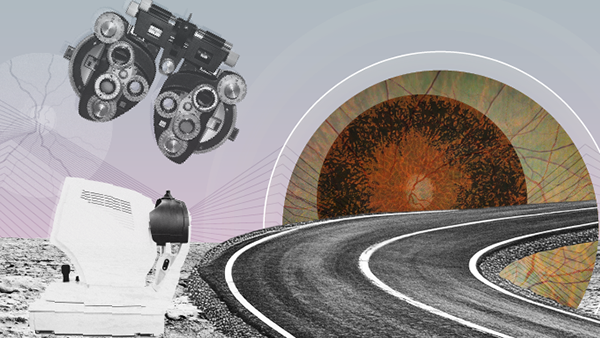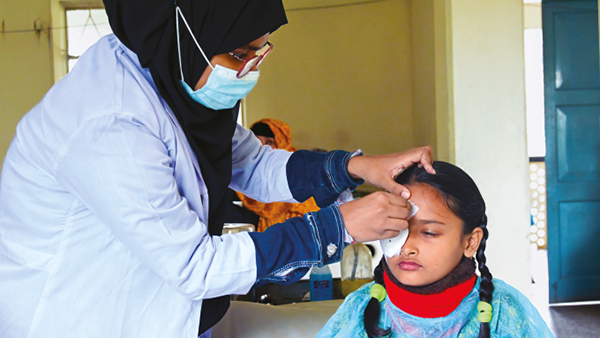You are viewing 1 of your 3 articles before login/registration is required
Defining Indispensable – Part II: The Practice Owner’s Perspective
You’re worried about investing in the latest OCT technology. Fear not – Cliff Williams understands. But, as an OCT veteran and technology early adopter, he’s here to hold your hand.
How did you get into the world of optics – and then advanced technology?
I started out in optics with my family about 30 years ago. Initially, we simply sold spectacles, but I very quickly recognized the need to evolve. I started working with optometrists and OMPs, and then embarked on a dispensing optician course with ABDO on block release and correspondence – probably the hardest way to do it but highly enjoyable nevertheless! I qualified before the dawn of the new millennium.
In the mid-2000s, I strongly felt a need to go more “high tech.” I didn’t quite know where to begin – and I’ll admit that the thought of investing in technology was daunting. Fortunately, NHS Scotland provided a grant for a retinal camera and a visual fields machine – something that all opticians in Scotland embraced as part of a new contract. At that point, I decided that I would do well to link my practice with a reputable name – people respond well to brands they associate with high quality. If I describe myself as Cliff Williams The Independent Optician it doesn’t give a sense of what we do. But if I say, “I’m Cliff Williams The Independent Optician using Zeiss technology,” it emphasizes our priorities and really changes people’s perception.
In 2009, I made my first OCT purchase buying the then top-of-the-range Cirrus 4000, and, from that point on, I decided to introduce a new piece of technology every year.
What prompted your decision to invest in OCT?
There were around 15 opticians in Kirkcaldy in the late 2000s, so – in addition to being a technology enthusiast (or geek, if you prefer) – I wanted to create a niche for my practice. I’ve seen a lot of practices come and go over the years – and I don’t want to be one of those. By being an early adopter of the latest technology, I’m able to truly differentiate myself. It’s my USP.
If you look at any consumer electronics field, most of us are keen to embrace the latest technology. Take your television – how many people have made the transition from CRT to LED, from 20 inches to 55 inches, from standard definition to HD and then to 4K? If we can see a real difference, we’re destined to upgrade – eventually. That desire for “better” translates into many other walks of life, including eye care.
When my customers come into my practice, they ask, “What’s new this year, Cliff?” They expect progress.
Crucially, my technology-first approach has had a significant impact on my turnover. Any investment can be painful – until you start to see a return. As people realize that you are outwardly committed to their eye care, word gets out very quickly. And in our world, word of mouth – especially in the form of recommendations – is an extremely powerful marketing tool.
You mentioned that investment can feel painful – how else do you justify the cost?
Well, if you buy an expensive piece of equipment and literally do nothing with it, all is not lost. You’ll perhaps get half back as a tax write off. But in my experience, new technology will always bring in business and it will always retain business – if you’ve got the right mindset.
What does it cost to “buy” a new patient – or even to get them to walk through your door? If you’ve got the right technology, you can impress and then retain more patients – and have them come back slightly more often. They are also more likely to purchase higher quality lenses and frames because they are in “premium mode.”
When it comes to OCT, you’ve not just invested but recently upgraded to the best-in-class CIRRUS 6000. Why?
Perhaps the most obvious difference between my old OCT and the new one is the speed of capture – it’s significantly faster. A macular cube scan used to take a couple of seconds; my new OCT has scanned before you even know it! But it also adds additional powerful features. All OCTs perform two essential functions: macular cube scans and retinal nerve fiber layer (RNFL) analysis. The CIRRUS 6000 adds ganglion cell analysis and angioplex to the picture without adding time to the patient experience. Angioplex is especially exciting as it enables us to measure blood flow through the retinal tissue – filling in a significant missing piece in the puzzle. We’re also able to perform anterior chamber analysis, which also has great utility.
I’ll also add that there is no question in my mind about sticking with Zeiss – and it’s not because the name is above my door. The company not only has cutting-edge technology, but also offers a comprehensive suite of tools – all accessible and integrated by what I like to call our “command centers” both in the test room and on my desk – powered by Zeiss Forum. By seeing different modalities side by side or even overlaid, you see the true power of technology working in concert – even ophthalmologists are taken aback. And – thinking back to my previous OCT – I’ve always been impressed by Zeiss’ software upgrade path; imagine being able to extract new meaning from the raw data of a decades old scan simply because of advances in computer processing. And that’s just another example of how we need to move forward with technology, not fight against it.
You’ve shown OCT to be indispensable – what’s the second most powerful piece of technology an optician should invest in?
A digital facial measurement system, like the Visufit 1000. Why? Because, with these two machines, you can have the biggest impact on patients. They help differentiate the patient experience. Moreover, they both perfectly match my motto, which I often use with customers: “Precision is key.”
What would you say to those practitioners who fall behind the OCT technology curve?
In the past, when I’ve spoken with optometrists who have no real interest in OCT, it’s usually because they haven’t connected with it – they haven’t realized that it has become indispensable in modern practice. Once I show them the technology, perform a few scans, and walk them through the results they’re often open mouthed. “Oh – I get it now. I need some of that!”
But, of course, they also need to know what it will do for them in terms of turnover. I say, “I’m an independent and I’ve been able to embrace the technology; you can’t stand still and become a dinosaur. Oh – and it’ll double your turnover.” More open mouths!
What’s more, OCT helps answer a terror-inducing question: “Have I missed something?” There are a couple of local opticians who ask us to perform scans on unusual cases for that very reason. They’re not quite ready to embrace OCT themselves, but they already recognize the value. I’ll add that we regularly help ophthalmologists out with interesting cases, which allows us all key learning moments. When the scans land on their desks, they receive something important: Peace of mind. And that’s just one of the reasons why our optometrist, Scott McKay, loves it too.
Finally – and this is secondary to patient and practice benefits, of course – embracing technology like OCT makes work far more exciting. I love making a commitment to something new – like the 6000 – and then finding out what it can do and how I can extract the most value for my customers and my business. My great enthusiasm for tech has been used across the UK, delivering CET for fellow professionals, including a few events for Zeiss over the years.
It’s very satisfying helping the profession move forward by sharing my skills in workshops and CET. But seeing the benefits of advanced technology play out through smooth clinical care and detailed referrals to ophthalmologists in the public and private sector – well, that’s even more satisfying!
I often say that OCT is the future. But I should probably stop saying that – it’s the present. And the very best OCT? Well, that’s future proof.
Read more in this series:
Defining Indispensable – Part I: The Patient Journey
Defining Indispensable – Part III: The Optometrist’s Perspective
The New Optometrist Newsletter
Permission Statement
By opting-in, you agree to receive email communications from The New Optometrist. You will stay up-to-date with optometry content, news, events and sponsors information.
You can view our privacy policy here
Most Popular
Sign up to The New Optometrist Updates
Permission Statement
By opting-in, you agree to receive email communications from The New Optometrist. You will stay up-to-date with optometry content, news, events and sponsors information.
You can view our privacy policy here
Sign up to The New Optometrist Updates
Permission Statement
By opting-in, you agree to receive email communications from The New Optometrist. You will stay up-to-date with optometry content, news, events and sponsors information.
You can view our privacy policy here
